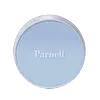What's inside
What's inside
 Key Ingredients
Key Ingredients

 Benefits
Benefits

 Concerns
Concerns

 Ingredients Side-by-side
Ingredients Side-by-side

Talc
AbrasiveSynthetic Fluorphlogopite
Silica
AbrasiveAluminum Starch Octenylsuccinate
AbsorbentOctyldodecyl Stearoyl Stearate
EmollientSqualane
EmollientSilica Dimethyl Silylate
EmollientSorbitan Isostearate
EmulsifyingDimethicone
EmollientTriethoxycaprylylsilane
1,2-Hexanediol
Skin ConditioningGlyceryl Caprylate
EmollientBentonite
AbsorbentWater
Skin ConditioningGlycerin
HumectantButylene Glycol
HumectantEpilobium Fleischeri Extract
Skin ConditioningMonarda Didyma Leaf Extract
Skin ConditioningCitric Acid
BufferingPotassium Sorbate
PreservativeTalc, Synthetic Fluorphlogopite, Silica, Aluminum Starch Octenylsuccinate, Octyldodecyl Stearoyl Stearate, Squalane, Silica Dimethyl Silylate, Sorbitan Isostearate, Dimethicone, Triethoxycaprylylsilane, 1,2-Hexanediol, Glyceryl Caprylate, Bentonite, Water, Glycerin, Butylene Glycol, Epilobium Fleischeri Extract, Monarda Didyma Leaf Extract, Citric Acid, Potassium Sorbate
Water
Skin Conditioning1,2-Hexanediol
Skin ConditioningButylene Glycol
HumectantXanthan Gum
EmulsifyingDisodium EDTA
Silica
AbrasiveAluminum Starch Octenylsuccinate
AbsorbentDimethicone
EmollientBentonite
AbsorbentEthylhexylglycerin
Skin ConditioningHydrolyzed Collagen
EmollientBifida Ferment Lysate
Skin ConditioningLactobacillus Ferment
Skin ConditioningPseudoalteromonas Ferment Extract
HumectantSodium Hyaluronate
HumectantTocopherol
AntioxidantHydrolyzed Elastin
EmollientWater, 1,2-Hexanediol, Butylene Glycol, Xanthan Gum, Disodium EDTA, Silica, Aluminum Starch Octenylsuccinate, Dimethicone, Bentonite, Ethylhexylglycerin, Hydrolyzed Collagen, Bifida Ferment Lysate, Lactobacillus Ferment, Pseudoalteromonas Ferment Extract, Sodium Hyaluronate, Tocopherol, Hydrolyzed Elastin
Ingredients Explained
These ingredients are found in both products.
Ingredients higher up in an ingredient list are typically present in a larger amount.
1,2-Hexanediol is a synthetic liquid and another multi-functional powerhouse.
It is a:
- Humectant, drawing moisture into the skin
- Emollient, helping to soften skin
- Solvent, dispersing and stabilizing formulas
- Preservative booster, enhancing the antimicrobial activity of other preservatives
Aluminum Starch Octenylsuccinate is a synthetic powder used as an absorbent, thickener, and anti-caking agent.
As an absorbent, it is great at mattifying skin by soaking up the oil. This is why you'll find it in a range of products from makeup to moisturizers.
This ingredient is considered a modified starch. Starch can also be found naturally in plants.
One study from 1991 found that 5% of this ingredient enhanced titanium dioxide SPF by as much as 40%. The study found 1% titanium dioxide had a 5.6 SPF and adding 5% of aluminum starch octenylsuccinate boosted it to an SPF of 8.1
Although “aluminum” in an ingredient name can raise red flags for some consumers, the form and usage context matter significantly. For typical topical applications, there is no substantial evidence of health risks - such as cancer, neurotoxicity, or systemic “aluminum overload.”
Learn more about Aluminum Starch OctenylsuccinateBentonite is an aluminium phyllosilicate clay with great absorbent properties. The name 'bentonite' comes from the area where the largest source is found: Fort Benton, Wyoming.
As a clay, bentonite is often used to absorb excess oil and provide exfoliation. It has also been shown to have some antibacterial and anti-inflammatory properties. Studies show bentonite was effective at calming dermatitis from poison ivy and in diaper dermatitis of infants. Bentonite has also been shown to act as a barrier against toxic compounds on your skin.
Sunscreens containing bentonite display higher water resistance and stay on the skin for much longer. The sunscreens containing bentonite also show higher potency and UV light absorbtion.
Bentonite is naturally created from volcanic ash and several natural weathering/hydrothermal processes.
A common usage of bentonite is removing excess protein from white wines. Bentonite contains a property of being able to absorb large amounts of protein from aqueous solutions.
Phyllosilicate clay has a structure formed by sheets.
Learn more about BentoniteButylene Glycol (or BG) is used within cosmetic products for a few different reasons:
Overall, Butylene Glycol is a safe and well-rounded ingredient that works well with other ingredients.
Though this ingredient works well with most skin types, some people with sensitive skin may experience a reaction such as allergic rashes, closed comedones, or itchiness.
Learn more about Butylene GlycolDimethicone is a type of synthetic silicone created from natural materials such as quartz.
What it does:
Dimethicone comes in different viscosities:
Depending on the viscosity, dimethicone has different properties.
Ingredients lists don't always show which type is used, so we recommend reaching out to the brand if you have questions about the viscosity.
This ingredient is unlikely to cause irritation because it does not get absorbed into skin. However, people with silicone allergies should be careful about using this ingredient.
Note: Dimethicone may contribute to pilling. This is because it is not oil or water soluble, so pilling may occur when layered with products. When mixed with heavy oils in a formula, the outcome is also quite greasy.
Learn more about DimethiconeSilica, also known as silicon dioxide, is a naturally occurring mineral. It is used as a fine, spherical, and porous powder in cosmetics.
Though it has exfoliant properties, the function of silica varies depending on the product.
The unique structure of silica enhances the spreadability and adds smoothness, making it a great texture enhancer.
It is also used as an active carrier, emulsifier, and mattifier due to its ability to absorb excess oil.
In some products, tiny microneedles called spicules are made from silica or hydrolyzed sponge. When you rub them in, they lightly polish away dead skin layers and enhance the penetration of active ingredients.
Learn more about SilicaWater. It's the most common cosmetic ingredient of all. You'll usually see it at the top of ingredient lists, meaning that it makes up the largest part of the product.
So why is it so popular? Water most often acts as a solvent - this means that it helps dissolve other ingredients into the formulation.
You'll also recognize water as that liquid we all need to stay alive. If you see this, drink a glass of water. Stay hydrated!
Learn more about Water